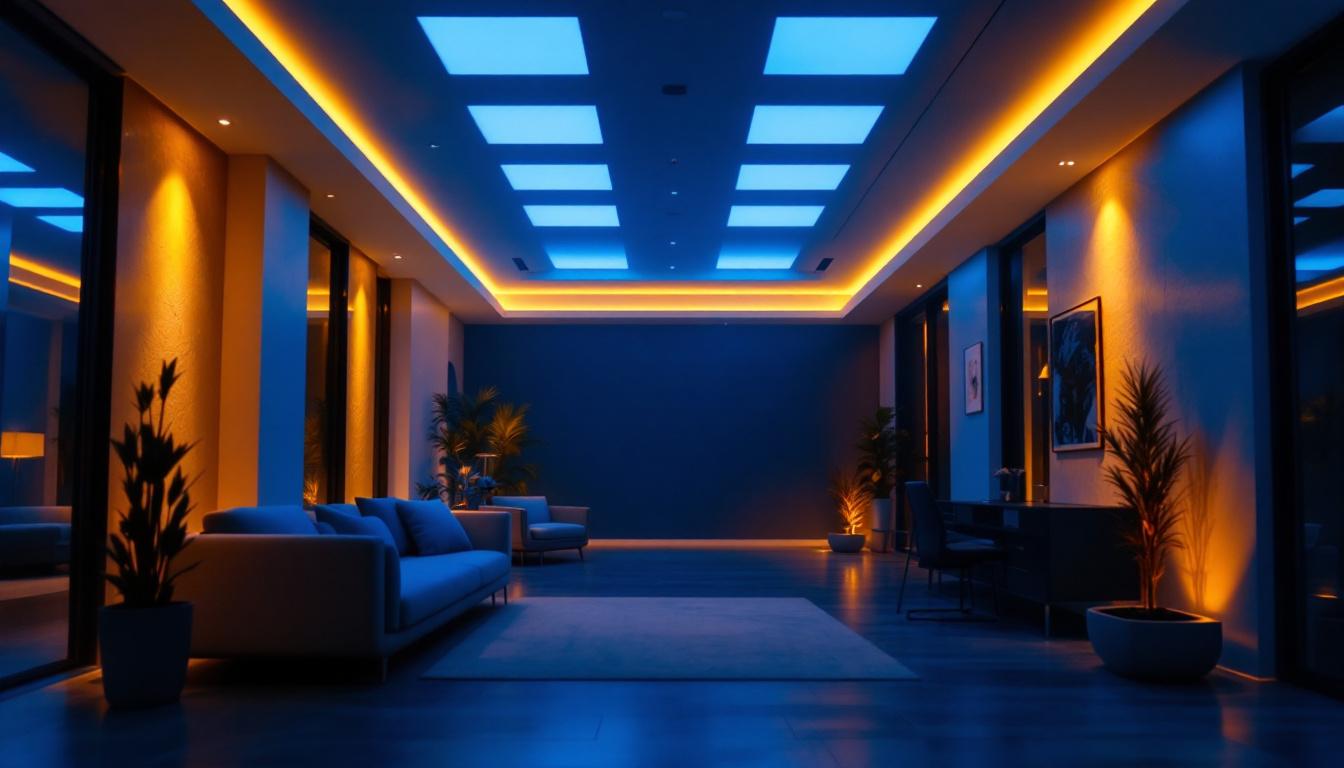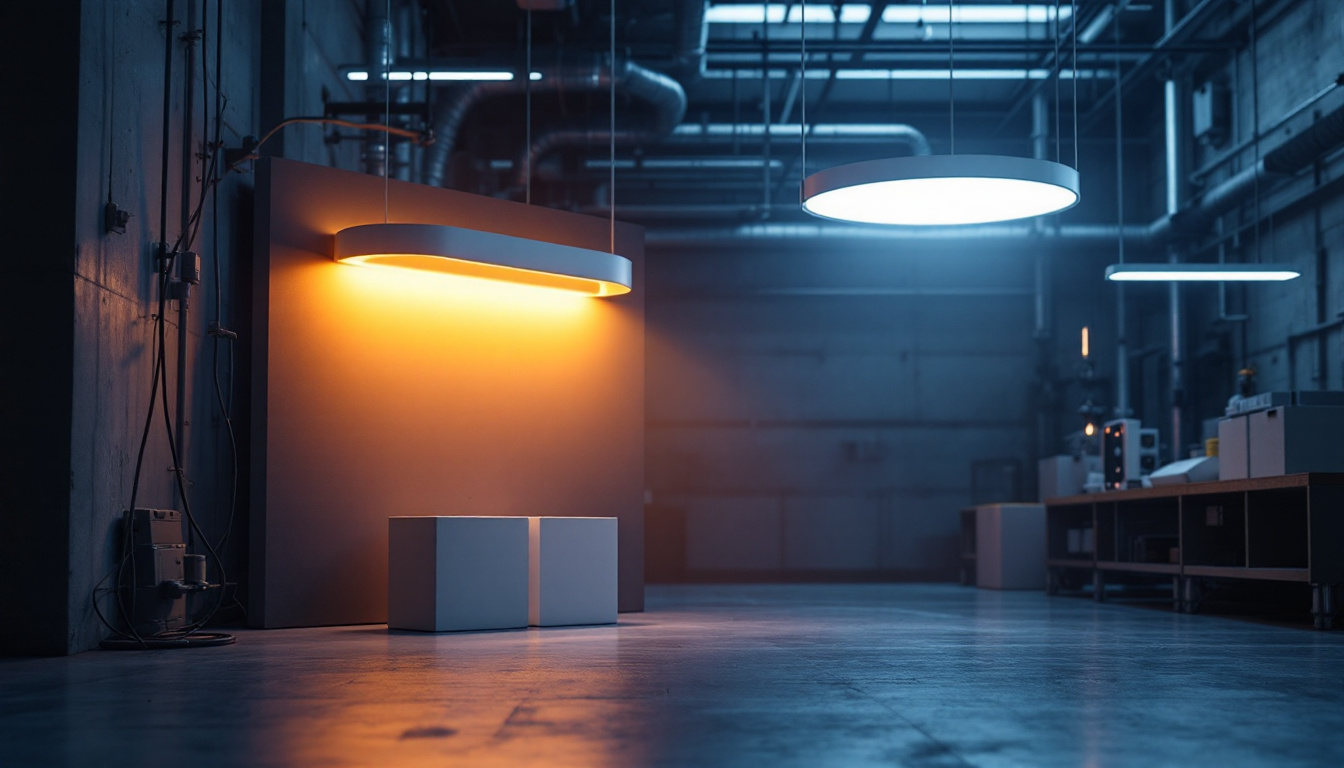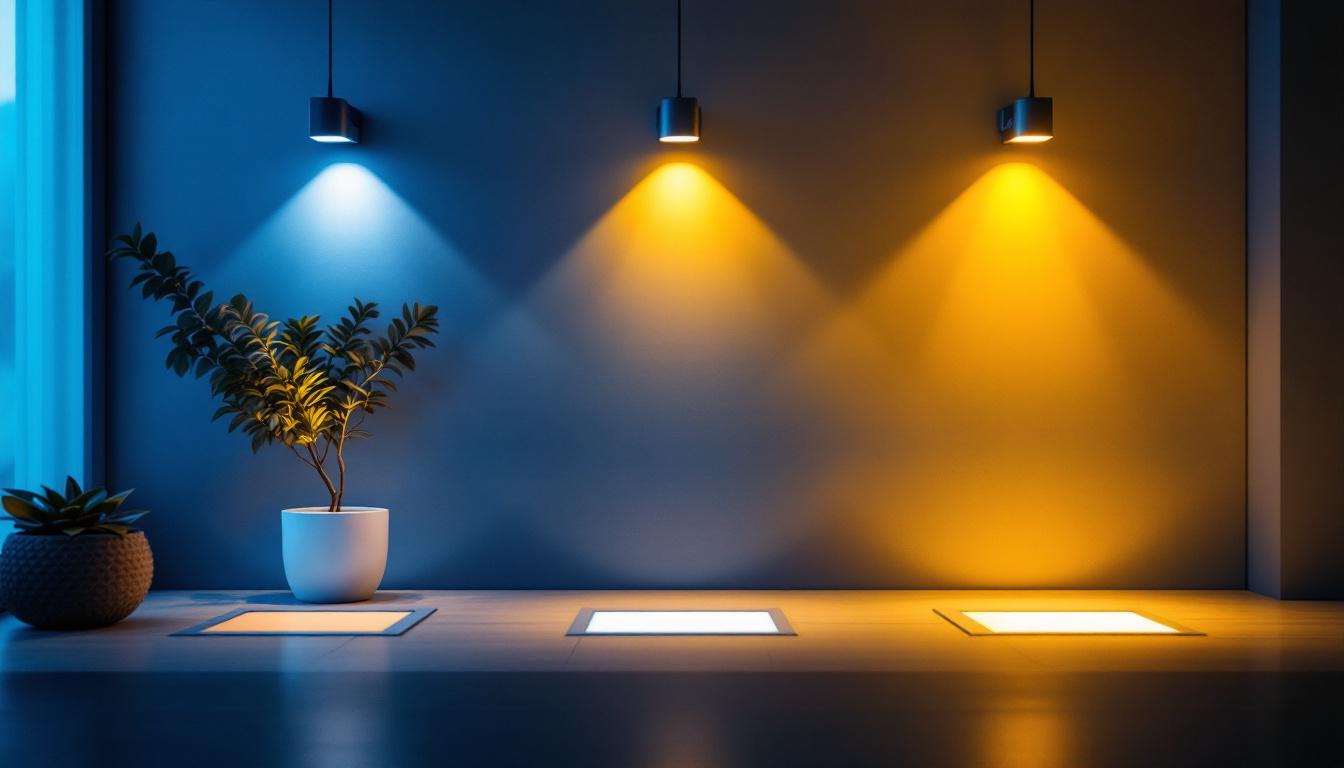
Indoor recessed lighting has become a staple in modern interior design, offering a sleek and unobtrusive way to illuminate spaces. For lighting contractors, understanding the intricacies of recessed lighting is essential for delivering high-quality installations that meet client needs. This article delves into the vital aspects of indoor recessed lighting, including its benefits, types, installation considerations, and design tips.
Recessed lighting, often referred to as can lighting or pot lighting, involves fixtures that are installed into the ceiling, creating a clean and modern appearance. These fixtures are designed to provide ambient, task, or accent lighting, depending on their placement and the type of bulb used.
One of the primary advantages of recessed lighting is its ability to save space. Unlike traditional light fixtures that hang down from the ceiling, recessed lights are flush with the ceiling, making them ideal for rooms with low ceilings or for creating a minimalist aesthetic.
Additionally, recessed lighting can enhance the overall ambiance of a room. By strategically placing fixtures, lighting contractors can create layers of light that highlight architectural features, artwork, or specific areas within a space. This versatility allows for greater control over the mood and functionality of a room. Furthermore, recessed lighting can also improve the perceived size of a room; when light is evenly distributed across the ceiling and walls, it creates an illusion of openness, making spaces feel larger and more inviting.
There are several types of recessed lighting fixtures available, each designed for specific applications. The most common types include:
In addition to these common types, there are also specialized fixtures designed for specific needs. For instance, wet-rated recessed lights are suitable for use in bathrooms or outdoor spaces where moisture is a concern. Similarly, energy-efficient LED recessed lights have gained popularity due to their longevity and reduced energy consumption, making them an eco-friendly choice. Homeowners can also opt for smart recessed lighting, which can be controlled via smartphone apps or voice commands, allowing for customizable lighting scenes and schedules that enhance convenience and energy efficiency.
Proper installation is crucial for the performance and safety of recessed lighting. Lighting contractors must consider several factors to ensure a successful project.
Before installation, it is essential to evaluate the electrical requirements of the recessed fixtures. Most fixtures require a specific wattage and voltage, which must be compatible with the existing electrical system. Additionally, contractors should ensure that the circuit can handle the load of the new fixtures to prevent overloading. It’s also advisable to check for any local electrical codes or regulations that may dictate specific requirements for installation, as compliance is not only critical for safety but also for passing inspections.
The placement of recessed lights significantly impacts the effectiveness of the lighting. A common guideline is to space the fixtures approximately 4 to 6 feet apart, depending on the height of the ceiling and the desired brightness. For higher ceilings, fixtures can be spaced further apart, while lower ceilings may require closer spacing to achieve adequate illumination. Furthermore, the beam angle of the recessed lights should be taken into account; wider beam angles can allow for greater spacing between fixtures, while narrower angles may necessitate closer placement to avoid dark spots.
Moreover, contractors should consider the purpose of the lighting when determining placement. For instance, task lighting in kitchens may require more focused lighting over work areas, while living rooms may benefit from a more diffuse illumination. In addition, accent lighting can be strategically placed to highlight architectural features or artwork, creating a visually appealing atmosphere. Understanding the flow of the space and how it will be used can greatly influence the overall effectiveness of the lighting design.
When installing recessed lighting in insulated ceilings, it is crucial to use fixtures rated for contact with insulation (IC-rated). This prevents overheating and potential fire hazards. Additionally, ensuring proper airflow around the fixtures is vital for maintaining energy efficiency and prolonging the lifespan of the bulbs. Contractors should also consider the use of airtight fixtures, which can help in reducing energy loss and improving the overall efficiency of the home’s heating and cooling systems. Properly sealing the fixtures can prevent drafts and contribute to a more comfortable living environment.
Furthermore, it is important to evaluate the type of insulation used in the ceiling. Different insulation materials may have varying degrees of heat resistance and airflow properties, which can affect the performance of recessed lighting. For instance, fiberglass insulation may allow for better airflow compared to foam insulation. Understanding these nuances can help contractors make informed decisions that enhance both safety and efficiency in the installation process.
Incorporating recessed lighting into a design scheme requires thoughtful planning and creativity. Here are some design tips to consider:
To create a well-balanced lighting scheme, layering different types of lighting is essential. Recessed lights can serve as ambient lighting, but combining them with other sources, such as pendant lights or wall sconces, can enhance the overall effect. This layered approach allows for greater flexibility in adjusting the mood of a space. For instance, in a living room, recessed lights can provide a soft glow for relaxation, while brighter pendant lights can be used for reading or entertaining. Additionally, dimmer switches can be a valuable addition, enabling homeowners to easily modify the intensity of the light based on the time of day or occasion.
The choice of bulbs can dramatically affect the quality of light produced by recessed fixtures. LED bulbs are a popular choice due to their energy efficiency and long lifespan. They are available in various color temperatures, allowing contractors to select the right hue to complement the design. Warm white tones can create a cozy atmosphere, while cooler tones may be better suited for task-oriented spaces. Furthermore, it’s important to consider the lumen output of the bulbs, as this will determine how bright the space will be. A well-lit kitchen, for example, may require higher lumen bulbs to ensure safety and functionality during meal preparation.
Recessed lighting can be an effective tool for highlighting architectural features within a space. By strategically placing fixtures to wash walls or illuminate unique design elements, contractors can draw attention to the beauty of the interior. This technique not only enhances the visual appeal but also adds depth and dimension to the room. For example, illuminating a textured stone wall or a piece of artwork can create a stunning focal point that transforms the ambiance. Additionally, using adjustable recessed lights allows for fine-tuning the angle of illumination, ensuring that the light accentuates the desired features without overwhelming the space.
When planning for recessed lighting, it’s crucial to take into account the height of the ceiling. Higher ceilings may require deeper recessed fixtures to ensure that the light is distributed effectively throughout the room. Conversely, for lower ceilings, shallow fixtures can provide ample lighting without making the space feel cramped. Moreover, the placement of recessed lights should be carefully calculated; typically, they should be spaced about 4 to 6 feet apart to avoid dark spots and ensure even illumination. This consideration is particularly important in larger areas such as open-concept living spaces, where maintaining a consistent light level is key to achieving a harmonious design.
While recessed lighting can elevate a space, several common mistakes can detract from its effectiveness. Awareness of these pitfalls can help contractors deliver superior results.
One of the most frequent errors is over-spacing recessed lights. Insufficiently spaced fixtures can lead to uneven lighting, resulting in dark spots and an uninviting atmosphere. It is crucial to follow established guidelines while also considering the specific requirements of the space.
Failing to incorporate dimming options can limit the versatility of recessed lighting. Dimmers allow homeowners to adjust the brightness according to their needs, enhancing the functionality of the lighting. Including dimmer switches during installation can significantly improve the user experience.
Ceiling height plays a critical role in determining the appropriate type and spacing of recessed lighting. In spaces with high ceilings, fixtures may need to be spaced further apart to achieve the desired effect. Conversely, in lower ceilings, fixtures should be positioned closer together to provide adequate illumination. Ignoring this factor can lead to poor lighting outcomes.
Once installed, maintaining recessed lighting is essential for ensuring longevity and optimal performance. Regular maintenance can prevent issues and enhance the overall effectiveness of the lighting.
Dust and grime can accumulate on recessed lighting fixtures, diminishing their brightness and overall appearance. Regularly cleaning the fixtures, including the trim and lens, can help maintain their aesthetic and functional quality. A simple wipe-down with a damp cloth can keep fixtures looking new and ensure maximum light output.
As with any lighting fixture, bulbs will eventually need to be replaced. Keeping track of the lifespan of the bulbs used in recessed fixtures is important for maintaining consistent lighting levels. Contractors should educate clients on the signs of bulb failure and the importance of timely replacements.
Periodically checking the electrical connections of recessed lighting can prevent potential issues. Loose connections can lead to flickering lights or complete fixture failure. Encouraging clients to schedule routine inspections can help identify and resolve problems before they escalate.
Indoor recessed lighting offers a versatile and modern solution for illuminating various spaces. For lighting contractors, understanding the essential facts surrounding recessed lighting is crucial for delivering successful installations. By considering the benefits, types, installation requirements, design tips, and maintenance practices, contractors can ensure that their recessed lighting projects meet client expectations and enhance the beauty of any interior.
As the demand for innovative lighting solutions continues to grow, staying informed about the latest trends and techniques in recessed lighting will empower contractors to provide exceptional service. Embracing these essential facts will not only elevate the quality of installations but also contribute to the overall satisfaction of clients.
Ready to take your lighting projects to the next level? At LumenWholesale, we provide lighting contractors with the highest quality, spec-grade recessed lighting products at prices that can’t be beaten. Say goodbye to local distributor markups and hello to our extensive selection of reliable, high-performance lighting that meets the strictest industry standards. Plus, with free shipping on bulk orders, you can stock up on superior lighting solutions without worrying about hidden fees. Elevate your installations with the perfect combination of quality, affordability, and convenience. Discover the value of wholesale lighting and make LumenWholesale your go-to source for all your lighting needs. Wholesale Lighting at the Best Value.

Discover how LED indoor grow lights revolutionize cannabis cultivation by enhancing safety in lighting installations.

Explore the cutting-edge world of lights industrial, where innovation meets design in the future of lighting.

Explore the pros and cons of square pot LED lights compared to other alternatives in this comprehensive guide.

Discover the essential best practices lighting contractors use when working with outdoor LED flood bulbs.